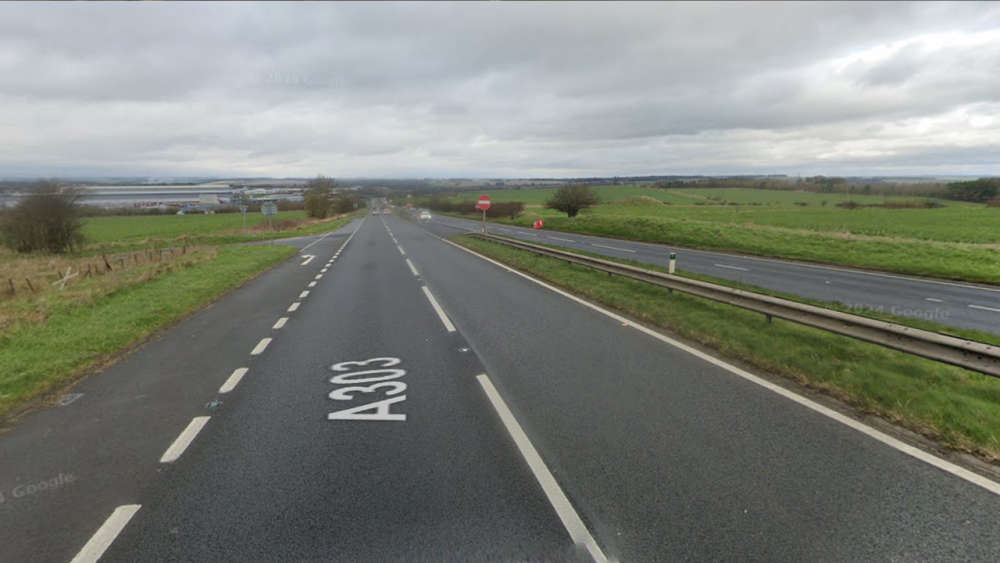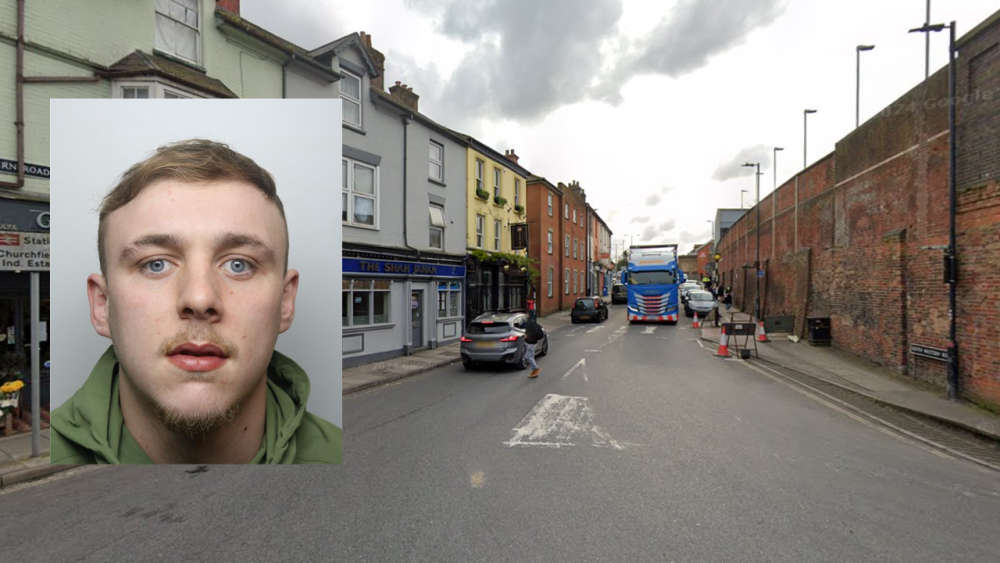Yesterday (Thursday, 7th September), Canon Kenneth Padley, Canon Treasurer of Salisbury Cathedral, climbed to the top of the scaffold on the East End of the Cathedral to bless the cross that sits high above the Trinity Chapel.
Called ‘Topping Out’, Canon Kenneth’s blessing marked a significant milestone in an extraordinary feat of restoration and repair, which began with a survey by the then Clerk of Works, Roy Spring, in 1986.
In his survey, Spring noted that the stonework was in a dangerous condition, and major work was required.
Restoration work eventually got underway after a huge fundraising appeal in the mid to late 1980s, and the stonemasonry, glazing and maintenance team have since been working their way around the building, a 37-year marathon that has taken almost as long as it took to build the main Cathedral.
Topping Out is an age-old tradition in the building trade and has been adopted by the Cathedral to mark the end of each phase of restoration.
This latest phase at the East End has seen around 1,100 stones replaced, while the windows have been cleaned, the wooden frames restored, the lead water goods repaired, and any other remedial work undertaken.
The Topping Out is a red-letter day for Gary Price, Clerk of Works. Gary started work on the Spire as a stone sawyer and completes the restoration and repair circuit as the Works Yard's head.
Likewise, his colleague Sam Kelly, Glazing Manager, has seen the whole process unfold.
Between them, they have clocked up over 80 years’ experience, and the rest of the team of 20 have collectively amassed more than two centuries of experience between them.
More than a lifetime in stone.
Now that the Topping Out blessing has taken place, the scaffold will be painstakingly removed, a process that will take around six weeks, and the rooftops and parapets that are currently accessible will fall back into quiet, unvisited tranquillity, as will the amazingly delicate carvings done by the Cathedral masons and the ‘secret’ glazing workshop built to facilitate the re-leading of the Cathedral windows and the installation of the Moses window in 1781.
Just as our masons uncovered evidence of their forebears in the form of oyster shells, eaten for lunch and used to pack spaces between stones, so future masons carrying out restoration work centuries from now will discover quirky stone carvings of, for example, a ferret, a baby dragon, a bird on a nest, a gecko, a sunflower and even the figure of a female mason carved by Carol Pike, who has worked for the Cathedral for 17 years and was married in the Cathedral Quire.
Among the new stones fixed on the East End, there are also commemorative stones recalling historical events or people - King Charles’ stone, unveiled when he was the Prince of Wales to mark the 800th anniversary of the Cathedral’s foundation; the Spitfire Stone that recalls the wartime work of the so-called ‘secret spitfire’ builders, and a stone celebrating the then Dean’s daughter running (and completing) the London marathon to raise funds for the Cathedral restoration.
As part of the Cathedral's Sponsor a Stone scheme, other stones have been carved in memory of loved ones. All waiting to be found in future…
Gary Price, Clerk of Works, said: “It has been a great honour and a privilege to have been able to work on this incredible building since the start of our modern repair programme, and by mid-November, all traces of the scaffolding that has made its way around the building for the last 37 years will be gone and the Cathedral will stand in glory as it did in the 14th century after Spire was added.
"I feel a bit sad about not being able to look at the amazing carvings done by our team but incredibly proud of and humbled by what they have achieved.”
Kenneth Padley, Canon Treasurer, who is responsible for the fabric of the building said: “I feel incredibly privileged to have been asked to carry out the blessing at the East End. As well as marking the contribution that our stone sponsors have made and the work done by the team, it is an opportunity to reaffirm the purpose of this building. A grand and glorious tribute to our Lord and a symbol of hope and resilience for the city.”
Meanwhile, the Cathedral stonemasons cannot afford to rest on their laurels. They have moved on to the North Cloisters (work that will take about four years to complete), where they are restoring the elaborately carved tracery and Purbeck columns. Conservation work on the Cathedral never stops.
Feature Image: Finnbarr Webster

 Child suffers life-threatening injuries in collision on A303
Child suffers life-threatening injuries in collision on A303
 Mum to join Stars Appeal’s Walk for Wards in support of Neonatal Unit that cared for her daughter
Mum to join Stars Appeal’s Walk for Wards in support of Neonatal Unit that cared for her daughter
 Salisbury battle past Tonbridge Angels at the Ray Mac
Salisbury battle past Tonbridge Angels at the Ray Mac
 Emergency Services stood down after substance scare in Durrington
Emergency Services stood down after substance scare in Durrington
 Emergency Services close road in Durrington for incident
Emergency Services close road in Durrington for incident
 Police hunt man after collision injures two people in Salisbury
Police hunt man after collision injures two people in Salisbury
 Sarah Gregson joins Wiltshire Creative as Take Part Director
Sarah Gregson joins Wiltshire Creative as Take Part Director
 Salisbury's relegation battle continues at the Ray Mac against Tonbridge Angels
Salisbury's relegation battle continues at the Ray Mac against Tonbridge Angels









